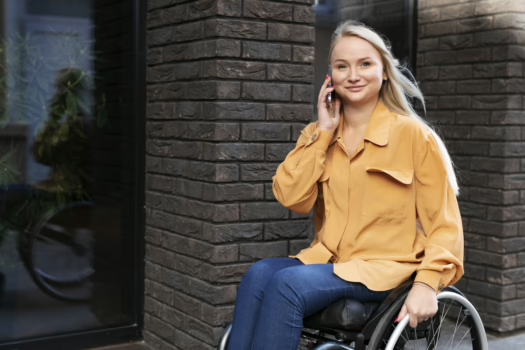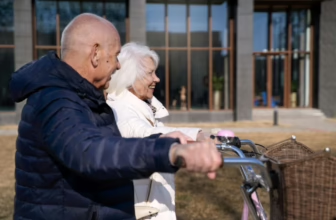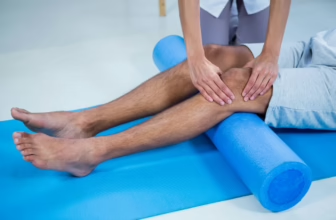The medical field has never been more advanced in terms of techniques and therapies. And when it comes to people with disabilities, these techniques are just as modern.
Of course, each treatment must be individualized, but at the same time, it can also combine both holistic approaches and superior technologies. Some of these therapies can be physical. Others go towards the emotional side, not to mention the social aspect.
With this in mind, let’s look at some of the latest therapy techniques for people living with disabilities.
When Technology Kicks In
Technology revolves around every field in the world today. Medical therapies make no exception either. For instance, robotic technologies and devices can help people deal with repetitive patterns, such as walking or other movements, which is a massive innovation for those with limb issues. These devices often integrate sensors and AI to provide real-time feedback.
Patients are more likely to gain positive results from retraining and practicing exercises with augmented or virtual reality. For example, VR is great to train balance, but also to manage painful sensations. Such exercises are more realistic and engaging.
Even the fact that people can engage in therapy sessions from the comfort of their bedrooms is a plus. They can be monitored remotely, but also participate in all kinds of therapies.
On top of all these, assistive technologies are just as varied and can assist with numerous issues. Basically, they can help patients overcome all kinds of cognitive or physical issues. From smart prosthetics to communication devices, these tools enhance independence and participation.
The Creative Approach
Therapy techniques for clients with disabilities can go even further when creativity is involved.
Therapeutic recreation is a good example. While not even a thing a few decades ago, such activities can improve social, emotional and cognitive functionality, not to mention physical elements.
Aquatic therapy, for instance, is extremely common today, but sports can also be adapted to people’s needs.
Creativity also covers music therapy or even art therapy. Such therapies bring in extra channels for communication, but they also allow patients to express themselves. This is a good opportunity for those with communication problems.
Even animals can be used in therapy today, helping people find their motivation, find psychological support and add to their social skills. Animal-assisted therapy reduces anxiety and encourages social interaction in unique, nonjudgmental ways.
Bespoke Psychotherapy
Psychotherapy follows some general rules, but it’s always been individualized based on patients’ needs. Things have gone a bit further lately. For example, CBT (Cognitive Behavioral Therapy) in an adapted form challenges people to change bad behaviors or even habits.
For people with disabilities, this could translate into basic language, a different pace or even role playing.
DBT (Dialectical Behavior Therapy) is a type of CBT that pushes people to learn new skills in stress management, interpersonal connections, feeling regulation and mindfulness.
Talking about mindfulness, this isn’t a new concept either, but it’s advanced so much that it’s considered a custom form of therapy, especially for people with intellectual disability. They can help patients keep stress under control, get rid of anxiety and even keep their thoughts and emotions under control.
At this point, it’s important to understand that people facing disabilities are exposed to more potential dangers, such as different traumas. From a psychological point of view, modern therapies can include solutions to boost emotional safety and add to the resilience.
Physical Improvements
The robotic approach is a modern form of therapy in people with physical disabilities too. For example, there are exoskeletons or other forms of robotic concepts that can help patients overcome some neurological issues. Helping with repetitive movements, they bring function back.
Assistive technology is another form of modern technology that helps people physically. Therapists in this field rely on all kinds of technologies to add to the patients’ daily experiences.
Everyone uses such technologies, not just people with disabilities. Sometimes, it’s all about convenience. Software activated by voice is a brilliant idea, let alone other daily utensils that have been adapted to patients’ needs. Generally speaking, this is about smart devices and homes. These innovations enable autonomous living and increase participation.
It’s important to consider functional electrical stimulation too, which affects muscles. Not only does it retrain muscles to be fully functional, but it can also help against painful sensations, especially in patients suffering from nerve damage.
Complementary Therapies for People with Disabilities
As you can see, most of these modern therapies are strongly connected to technology. On the same note, technology is also used in all kinds of complementary therapies.
Just the plain fact that many services can be offered online is a brilliant upgrade for those who aren’t fully mobile. Plus, the virtual approach gives them more options too, meaning they can find therapists and specializations for whatever they need. This greatly increases access to specialized care.
Another modern therapy that can be seen as complementary is transcranial magnetic stimulation, which is suitable for those recovering from a stroke. Direct current stimulation can also improve brain functionality.
Then, neurofeedback is an opportunity for people dealing with specific mental disabilities. For example, it shows great results in patients suffering from ADHD.
These systemic approaches go hand in hand with family therapies. At the end of the day, the family often plays an important role in the recovery process, yet family members and close friends also need to educate themselves on such modern therapies.
As a short final conclusion, patients with disabilities have access to more technologies and therapies than ever. There’s never been so much support, and the good news is that such improvements aren’t showing any signs of stopping. The future promises even more innovative and effective care.
With more and more research studies and technological advances popping up, disabilities are likely to be fully annihilated in terms of quality of life.
Follow me down the rabbit hole!
I'm Alice and I live with a dizzying assortment of invisible disabilities, including ADHD and fibromyalgia. I write to raise awareness and end the stigma surrounding mental and chronic illnesses of all kinds.








